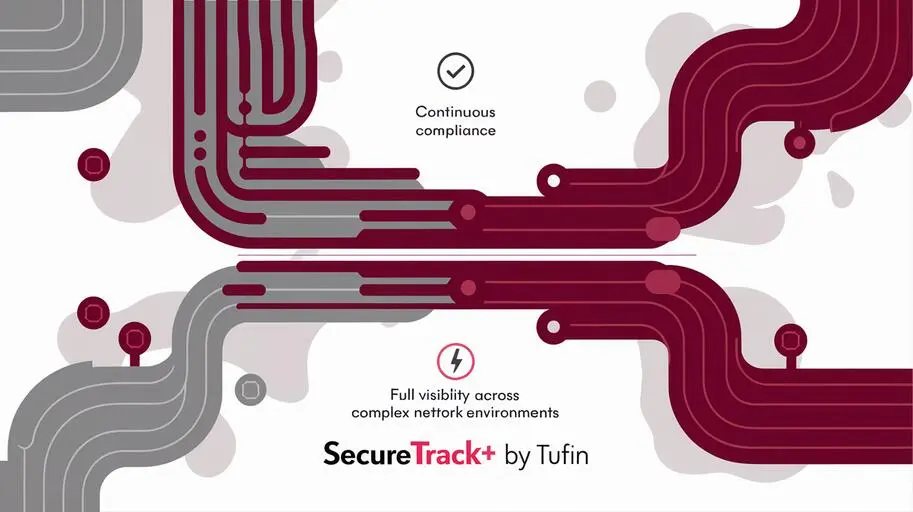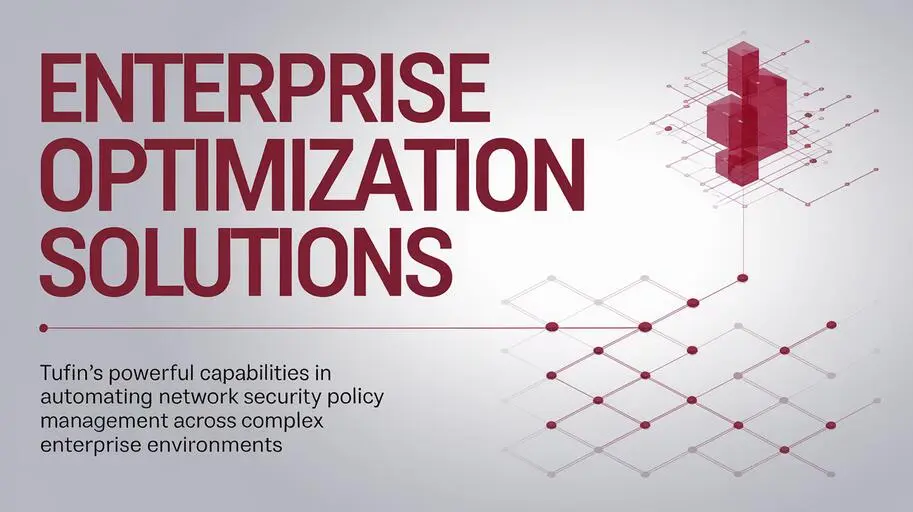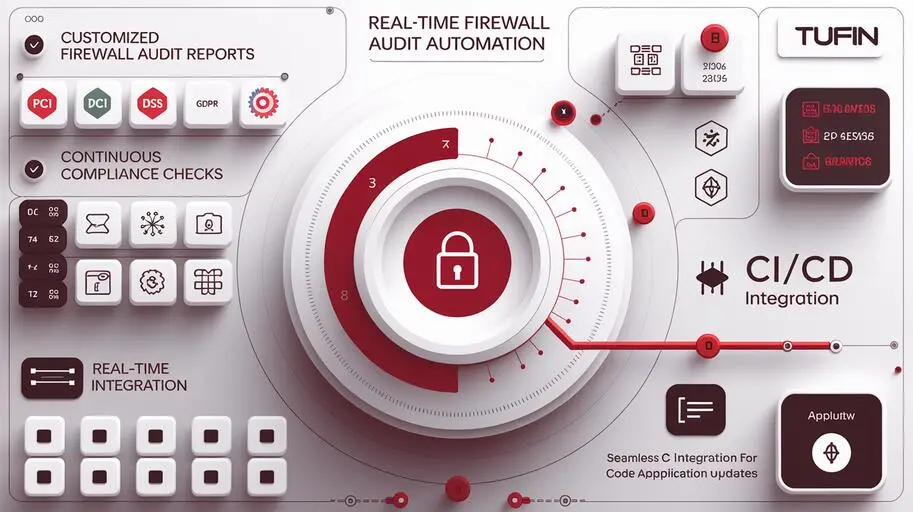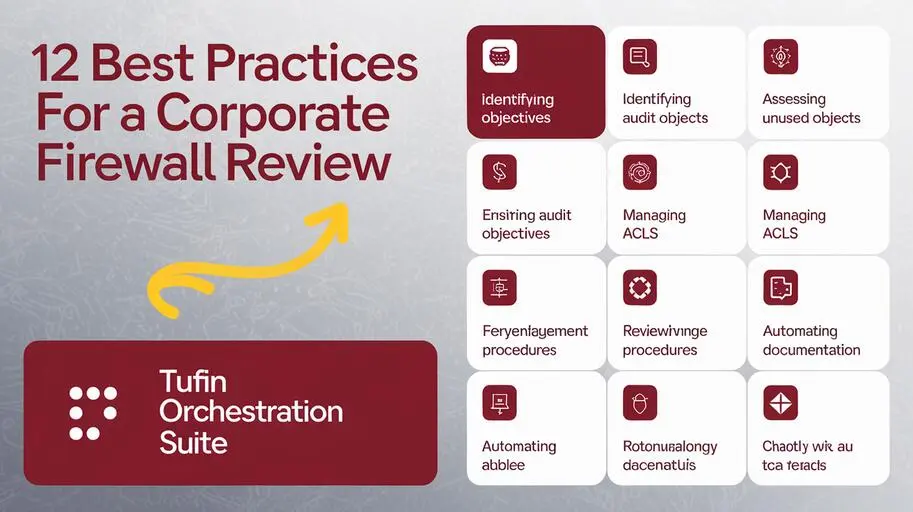
Modern enterprise network infrastructure is a complex and dynamic environment where security plays a key role. Managing firewalls, which are the foundation of network protection, is becoming an increasingly labor-intensive and complex process, especially in the face of a shortage of qualified specialists and constantly growing threats. Manual management leads to errors, inconsistencies, and, as a result, vulnerabilities. Tufin offers a comprehensive solution for automating firewall management, which significantly increases efficiency, reduces risks, and ensures compliance with regulatory requirements such as HIPAA (for healthcare) or GDPR (for data protection).
Why is Firewall Management Becoming a Complex Task?
Traditional firewall management methods based on manual configuration and administration no longer meet the needs of modern business. Here are the main factors that complicate this process:
- Growing complexity of network infrastructure: Companies use hybrid environments that combine on-premises data centers, cloud platforms, and virtualized networks, such as containerized applications, microservices, and SD-WAN. Managing firewalls in such a complex environment requires a unified approach.
- Increasing number of rules: Over time, the number of firewall rules grows exponentially, making it difficult to understand them, optimize rules, and keep them up to date. Redundant and obsolete rules, as well as shadow rules (rules that overlap or duplicate other rules), create security gaps.
- Shortage of qualified specialists: Finding and retaining specialists with in-depth knowledge of network security and firewall management is becoming increasingly difficult.
- Need for compliance: Companies are required to comply with a variety of regulatory requirements, such as PCI DSS, SOX, and others. Proof of compliance requires regular security audits and report preparation.
- Risks associated with manual changes: Making manual changes to security policies can lead to configuration errors that can be exploited by attackers. Examples of errors: incorrect network mask, typo in the IP address, forgot to activate the rule, etc.
Tufin: Firewall Automation for Enhanced Security and Efficiency
Tufin Security Suite is a platform that provides centralized security policy management, change automation, and risk analysis for various types of firewalls, including Check Point R80.x, Cisco ASA 9.x, Fortinet FortiOS 6.x, Palo Alto Networks, and cloud platforms AWS, Azure, and Google Cloud. Automating Tufin’s security policy management significantly reduces the time required to make changes to firewall configurations. For example, it reduces the time to make changes from several hours to several minutes and minimizes the risks associated with manual errors. Tufin can optimize various types of rules, such as application-based rules or user-based rules.
Key Components and Capabilities of Tufin Security Suite
- SecureTrack: Provides visualization of security policies, risk analysis, and compliance. Lets you understand how your firewalls are configured, what rules are active, and what risks they create. SecureTrack analyzes objects, rules, services, zones, and relationships between them. SecureTrack also collects logs and correlates security events.
- SecureChange: Automates the process of making changes to security policies, from change request to implementation and verification. Integrates with IT service management (ITSM) systems such as ServiceNow, Jira, Remedy and supports custom workflows, providing complete control over the process.
- SecureApp: Automatically discovers and displays the relationships between applications and security infrastructure through traffic analysis or integration with CMDB. This simplifies security policy management for applications such as web applications, databases and ensures their protection.
How Tufin Solves Key Firewall Management Problems
Tufin provides solutions for the most pressing problems faced by technical specialists when managing firewalls:
Rule Optimization and Rule Cleanup
Over time, firewalls become overgrown with a huge number of rules, many of which become redundant, obsolete, or risky. Tufin allows you to:
- Automatically identify redundant and obsolete rules.
- Identify risky rules that can create security gaps. For example, rules that allow access to critical resources for everyone (any/any), rules with outdated protocols (e.g. Telnet)
- Recommend optimal rule optimization options based on traffic analysis and security policies.
- Automatically delete or disable unused rules. Tufin identifies unused rules based on log analysis over a defined period. The system sends a warning before deletion.
Cleaning and optimizing firewall rules with Tufin can significantly improve firewall performance and reduce risks.
Change Automation and Change Management
Making changes to security policies is a complex and risky process. Tufin automates this process, providing:
- Automatic verification of change requests for compliance with security policies.
- Automatic generation of configuration commands for various types of firewalls in CLI or API calls format, ensuring compatibility with different versions. Rollback functionality is provided in case of an error.
- Automatic verification after changes are made to confirm their correctness. Connectivity and service availability are checked. Automated security testing is possible after changes.
- Full audit of changes and tracking of all actions.
Automating changes to Tufin’s security policies significantly reduces the time required to make changes and minimizes the risks associated with manual errors. For example, automatically adding a rule for a new application with Tufin simplifies the process of deploying new services.
Risk Analysis and Compliance
Compliance with regulatory requirements, such as PCI DSS and SOX, is mandatory for many companies. Tufin simplifies this process by providing:
- Automatic risk analysis based on firewall configuration and security policies, using a database of known vulnerabilities and company policies. Examples of the types of risks that are identified are the presence of rules that allow insecure protocols, the absence of rules for critical applications.
- Automatic generation of compliance reports. For example, PCI DSS Report, SOX Compliance Report.
- Automatic verification of firewall configuration for compliance with security standards.
Tufin compliance checking of security policies with PCI DSS requirements, for example requirements 1, 2, 4, 6, 7, 8, 9, 10, 11 and generation of Tufin compliance and audit reports greatly simplify the security audit process.
Firewall Integration and Centralized Management
Tufin supports integration with a wide range of firewalls from leading manufacturers, including:
- Check Point
- Cisco
- Fortinet
- Palo Alto Networks
As well as with cloud platforms:
- AWS
- Azure
- Google Cloud
Tufin for Check Point Cisco Fortinet Palo Alto Networks and cloud environments provides centralized security policy management, regardless of firewall type or location.

Technical Details and Architecture of the Tufin Solution
The Tufin solution consists of several key components that interact with each other to provide firewall management and automation.
Tufin System Components and Their Interaction
Tufin system components and their interaction provide a comprehensive approach to managing network security.
- SecureTrack: The core of the platform, which collects information about the configuration of firewalls via API or SNMP, analyzes it and provides visualization of security policies. The data is stored in a database (supported databases: PostgreSQL, Oracle). Clustering and load balancing are supported for large environments.
- SecureChange: Provides automation of changes to security policies, from change request to implementation and verification. SecureChange uses the SecureTrack API to obtain information about security policies.
- SecureApp: Allows you to automatically discover and display the relationships between applications and security infrastructure.
- Tufin Orchestration Suite (TOS): Includes SecureTrack and SecureChange and provides a comprehensive solution for firewall management.
Tufin API for Automation
Tufin provides a powerful REST API that allows you to integrate the platform with other systems and tools. Tufin API automation allows you to automate firewall management tasks, such as:
- Creating and modifying firewall rules.
- Risk analysis and compliance.
- Generating reports and security audits.
Example code (Python) to create a rule:
import requestsurl = "https://
/api/v1/rules" headers = { "Content-Type": "application/json", "Authorization": "Bearer " } data = { "name": "Allow Web Traffic", "source": "Any", "destination": "WebServers", "service": "HTTP", "action": "Accept" } response = requests.post(url, headers=headers, json=data, verify=False)
if response.status_code == 201: print("Rule created successfully!") else: print(f"Error creating rule: {response.status_code} - {response.text}")
API Authentication: Supports API Token and Basic Authentication.
API Rate Limiting: Depends on Tufin server configuration.
Tufin Integration with Cloud Platforms
Tufin integration with AWS Azure Google Cloud allows you to manage security policies in cloud environments with the same ease and efficiency as in local networks. Tufin supports:
- Automatic discovery of cloud resources and firewalls via cloud provider APIs.
- Visualization of security policies in the cloud.
- Automatic verification of compliance in the cloud.
Tufin handles dynamic IP addresses in the cloud using integration with cloud services. Tufin supports cloud firewalls such as AWS Security Groups, Azure Network Security Groups, Google Cloud Firewall Rules.
Use Cases for Tufin: Practical Examples
Tufin can be used in various use cases to solve specific tasks in the field of network security:
- Managing changes to security policies: Automate the process of making changes to security policies, from change request to implementation and verification.
- Risk analysis and compliance: Automatically identify risks in firewall configuration and generate compliance reports.
- Rule optimization and rule cleanup: Identify redundant rules, obsolete rules, and risky rules and optimize security policies.
- Managing the security of cloud environments: Manage security policies in the cloud platforms AWS, Azure and Google Cloud with the same ease and efficiency as in local networks.
Automatic addition of a rule for a new web application: SecureApp detects a new application, automatically generates a change request in SecureChange, SecureChange verifies the request for compliance with policies, SecureTrack generates a configuration command for the firewall, the rule is added, and an automatic application availability check is performed.
Automatic response to the detection of Threat Intelligence from a third-party provider: Tufin receives information about Threat Intelligence from a third-party provider and automatically blocks the specified IP address or domain.
Best Practices for Managing Policies with Tufin
To make the most of Tufin for firewall management, it is recommended to follow these best practices: Best practices for managing policies with Tufin will help you get the most out of the solution.
- Regularly conduct risk analysis: Regularly analyze the firewall configuration for risks and vulnerabilities.
- Automate the change process: Use SecureChange to automate the process of making changes to security policies.
- Optimize firewall rules: Regularly identify redundant rules, obsolete rules, and risky rules and optimize security policies.
- Integrate Tufin with other systems: Integrate Tufin with IT service management (ITSM) systems and other tools to automate firewall management tasks.
- Use SecureChange Approval Workflow to make changes in the production environment.
- Configure Alerts in SecureTrack to monitor configuration changes and policy violations.
Tufin Scale Deployment
Tufin scale deployment refers to the ability of the Tufin solution to adapt to various sizes and complexities of network infrastructure: from small organizations to large enterprises with global networks. Tufin supports clustering and load balancing to ensure high availability and performance in large networks. The maximum number of supported devices and rules depends on the hardware configuration and license.
Conclusion
Tufin enables organizations of all sizes to simplify security policy management and focus on business growth by providing firewall automation, in-depth risk analysis, and broad firewall integration. With automatic configuration generation, compliance checking for PCI DSS and SOX, Tufin provides a comprehensive approach to protecting network infrastructure. Tufin solutions enable technical specialists to significantly increase efficiency, reduce risks, and comply with regulatory requirements.
To learn more about how Tufin can help your organization improve firewall management and enhance security, contact us for a personalized consultation and solution demonstration.
FAQs on: Automated Firewall Management for Enhanced Security and Compliance
-
Why is firewall management becoming increasingly complex?
The complexity of network infrastructure is increasing due to hybrid environments, the number of firewall rules is growing exponentially, there is a shortage of qualified specialists, it is necessary to comply with regulatory requirements, and there are also risks associated with manual changes.
-
What is Tufin Security Suite and what are its main components?
Tufin Security Suite is a platform for centralized security policy management, change automation, and risk analysis for various types of firewalls and cloud platforms. The main components are: SecureTrack (policy visualization, risk analysis, compliance), SecureChange (automation of change processes), and SecureApp (security policy management for applications).
-
How does Tufin help optimize firewall rules?
Tufin automatically identifies redundant, obsolete, and risky rules, recommends optimization options based on traffic analysis and security policies, and allows you to automatically delete or disable unused rules.
-
How does Tufin automate the process of making changes to security policies?
Tufin automates the verification of change requests for compliance with security policies, generates configuration commands for various types of firewalls, performs automatic verification after changes are made, and provides a complete audit of changes.
-
How does Tufin simplify compliance with regulatory requirements such as PCI DSS and SOX?
Tufin provides automatic risk analysis based on firewall configuration and security policies, automatic generation of compliance reports, and automatic verification of firewall configuration for compliance with security standards.
-
What types of firewalls and cloud platforms does Tufin integrate with?
Tufin integrates with Check Point, Cisco, Fortinet, Palo Alto Networks firewalls, as well as AWS, Azure, and Google Cloud cloud platforms.
-
What is Tufin Orchestration Suite (TOS)?
Tufin Orchestration Suite (TOS) includes SecureTrack and SecureChange and provides a comprehensive solution for firewall management and firewall automation.
-
What firewall management tasks can be automated using the Tufin API?
Using the Tufin API, you can automate the creation and modification of firewall rules, risk analysis and compliance, as well as report generation and security auditing.
-
In what scenarios can Tufin be used?
Tufin can be used to manage changes to security policies, analyze risks and compliance, optimize and clean up rules, and manage the security of cloud environments.
-
What best practices should be followed when managing policies with Tufin?
It is recommended to regularly conduct risk analysis, automate the change process, optimize firewall rules, and integrate Tufin with other systems.















